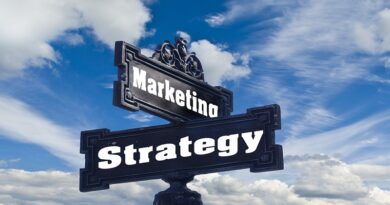Why B2B Companies Can’t Ignore the 5th P of Marketing – Payments
The four Ps – price, product, promotion, and place – have been cornerstones of strategic planning for marketers for decades. The four Ps were introduced by E. Jerome McCarthy in his book Basic Marketing: A Managerial Approach in 1960, and they are still applicable today. But since 1960, there have been significant changes in the cultural environment, which peaked with the pandemic’s digital explosion. Because of this, the fifth P—payments—has established itself as a crucial component of the marketing mix in 2022. Customers today expect seamless transactions on their terms, using their preferred payment methods, therefore improvements to the customer journey also include the payment journey.
Today, there are more opportunities to communicate with brands, particularly online, and because of their interactions with B2C businesses, B2B purchasers’ expectations have increased. 51% of corporate buyers are drawn to B2B websites that offer a great B2C-like user experience. Because of this, B2B companies should modernise their payment processes right away. Since B2B customers are fundamentally conventional consumers, they have higher standards when it comes to doing business with the companies they like and trust. Neglecting the fifth P as a crucial component of the B2B client experience carries a significant risk.
What B2C payments can teach B2B companies
B2C companies have already invested significant effort to determine what shoppers prefer, and the answer is simple: fast, convenient ways to pay their way during a seamless, omnichannel experience. As such, B2C merchants have a more established fifth P-based customer journey in place already.
Starbucks is a well-known example: They offer plenty of B2C payment methods, including cash, Apple Pay, credit cards, debit cards, Google Pay, Samsung Pay, PayPal, and Starbucks cards – plus their popular app. Starbucks’ mobile payment app, launched in 2009, has synched with their customers’ payment journey. The app has had the most mobile payment users in the U.S. until just recently. Today, Starbucks boasts an impressive 31.2 million loyal app customers who love the omnichannel payment method, second only to Apple, which has 43.9 million mobile payments users.
Starbucks has innovated payments to grow customer loyalty, effectively impacting marketing results without changing the product, price, place, or promotion mix. Now, consider the fact that business buyers are coffee consumers, too. It’s easy to see how they’ve been influenced by Starbucks and other B2C innovators and carried this expectation for seamless payments into the business world.
Credit cards aren’t favored in B2B
Credit cards are frequently used as the default payment option in digital B2B transactions due to the sellers’ widespread availability of merchant services. However, for B2B transactions, credit cards aren’t always the ideal payment option. Although data from the Why More Payment Options Mean More Purchases research reveals that B2B buyers don’t want to use credit cards to make online purchases, 50% of them prefer to pay with means other than credit cards when given the choice. Because of this, companies that only accept credit cards risk losing customers to rivals that provide more enticing payment options.
Today, 90% of B2B buyers research payment options before purchasing from a new supplier. They’re much savvier about how they expect to pay, thanks to their experiences as consumers. Now is the time for B2B businesses to modernize their payment options and go beyond credit cards. Building out a payments strategy for the complexities of B2B purchases can require a significant investment. It requires a sleek, sophisticated trade credit offering, along with net terms invoicing across all channels. The investment can pay off, though, because 15% of B2B buyers spend more when offered trade credit, as noted in the same TreviPay research. Even more importantly, 82% would choose one vendor over others if that vendor offered invoicing at checkout with 30-, 60- or 90-day terms.
B2B payments need more than a simple B2C-like payment method
Invoicing options, payment terms, and all the necessary information are included in the complex plumbing of B2B payments so that Procure-to-Pay and Enterprise Resource Planning platforms may easily consume the invoices. The urgency of today’s B2B buyers adds to this complexity: They want their preferred terms to be given immediately.
According to Forrester Tech Tide 2022, B2B payment augmentation is increasingly critical to companies’ ability to win, serve and retain business customers. Offering trade credit and net terms invoicing, automatic onboarding, instant decisioning, and digitizing A/R are all needed to make the B2B experience feel as easy as a B2C ecommerce transaction for the B2B buyer. Fast decisioning qualifies and secures more buyers with the right payment terms and the right trade credit lines, ultimately growing a loyal buyer network.
B2B organizations considering a fifth-P strategy must contemplate: B2C-like payment acceptance methods; digital and mobile purchasing options; payments, invoicing, and billing in one centralized location; invoicing, account reconciliation, and overdue reminders; risk management and sophisticated fraud detection; more working capital for buyers; and integrations with a myriad of technology vendors.
The fifth P offers customer-centric benefits the entire organization should champion
Every department is impacted in some way by a new payment solution. When dependencies involve numerous business units, progress may stall if the advantages to the finance team are the only focus. Leadership must instead put an emphasis on customer-centric advantages that everyone can value. These advantages include providing customers with dependable, high-quality service and assistance throughout their entire customer experience, fostering a positive feedback loop that results in repeat purchases.
Many organisations devote a lot of time and effort to enhancing the customer journey, but when it comes to payments, everything comes to a screaming halt. The fifth P continues the journey toward becoming completely customer-centric, and teams that had previously operated in silos must now work together to implement the transition of digital payments and invoicing or face losing out to rivals.




